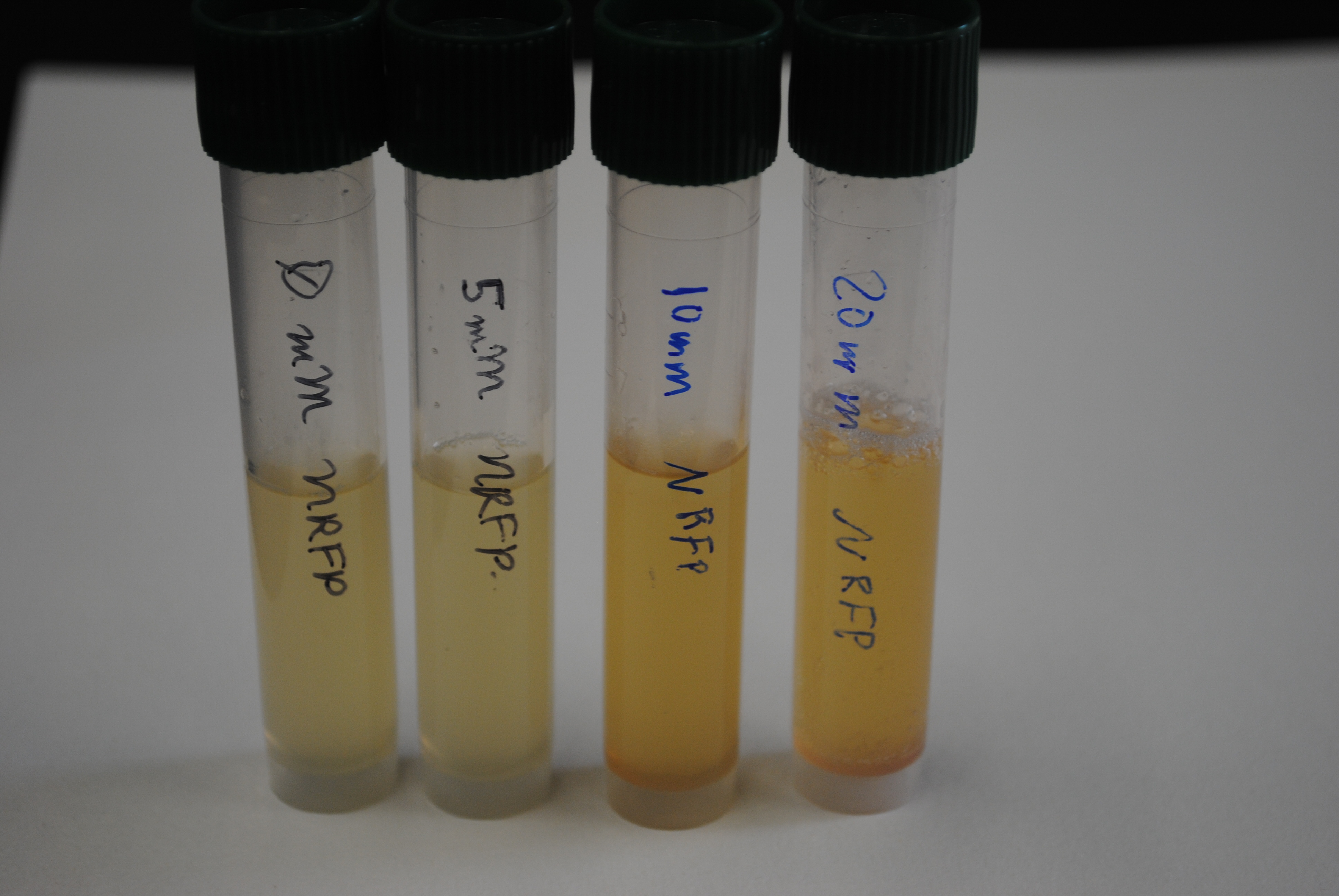Team:Gaston Day School/Project
From 2011.igem.org

| Home | Team | Official Team Profile | Project | Parts Submitted to the Registry | Modeling | Notebook | Safety | Attributions |
|---|
Contents |
Overall project
|
Gaston Day School’s iGEM project for 2011 has two distinct but complementary parts. First, we plan to build a functional nitrate detector using RFP. Red Fluorescent Protein has one distinct advantage over the more traditional Green Fluorescent Protein; it is visible without any special equipment. Our goal is to have a detector that is easy for anyone to use in the field. Most people, including farmers and ranchers, who would need to detect nitrogen pollution will not have a pocket UV light! We envision a kit that could be used to determine if the runoff of a particular farm was high in nitrogen. The kit will include all necessary components for running the test and then decontaminating the resulting growth to prevent release of the engineered bacteria into the environment. The second part of our project involves a close look at the actual risks of accidental release of the engineered bacteria into the environment. Many groups, including ours, have proposed and built environmental detectors of various sorts. Often, these detectors come with sophisticated mechanisms for preventing the release or for preventing the bacteria from growing if released. We would like to include a very simple mechanism for killing or denaturing the bacteria in our detector kit – bleach. Bleach is highly effective at killing bacteria and is readily available to the average person. Even if we include the bleach in the kit, we realize that many people do not (or will not) read and follow directions. We plan to simulate a variety of conditions under which our detector could be introduced into the environment, ranging from simply dumping it in the sink to pouring it into the local creek or soil. By producing survivorship curves, we can estimate the real risk of spreading the recombinant bacteria into the environment. |
Project Details
Part 1: Construction
In order to be able to start safety testing, it was obviously necessary to have functioning bacteria. Using some of last years supplies, competent cells were made to take up the plasmid DNA that was to be formed. After requesting the parts needed and growing the bacteria, the leftover bacteria's DNA from last year and the ordered bacteria's DNA from this year was was then cut by Eco-R1, Pst-1, Xba-1, and Spe-1 and afterwards ligased together to form the skeleton of our nitrate detector. It was finally inserted into the competent cells to create the detector. This was done several times to produce different strains and then refined to the best one that was most easily identifyable as red. This mainly took all summer to create and left us with time to do some safety experiments.
Part 2: Safety
To ensure that our detector can be sent out to everyone, we needed to make sure that it would do little to harm the environment if not disposed or used properly. Our bacteria carries the antibiotic resistance gene for chloramphenocol and if this was spread somehow, it could result in other kinds of bacteria gaining the same immunity. These bacteria could potentially be dangerous to the environment and possibly humans. One way to know if the bacteria could conjugate would be to assume that someone did not follow the directions and did not kill the bacteria with bleach provided in the kit. This person might have just poured our bacteria down the drain and into the municipal water supply or even just poured on the ground.
The Experiments
One way to test and see if our bacteria survived to conjugate would be to
Results
 "
"

